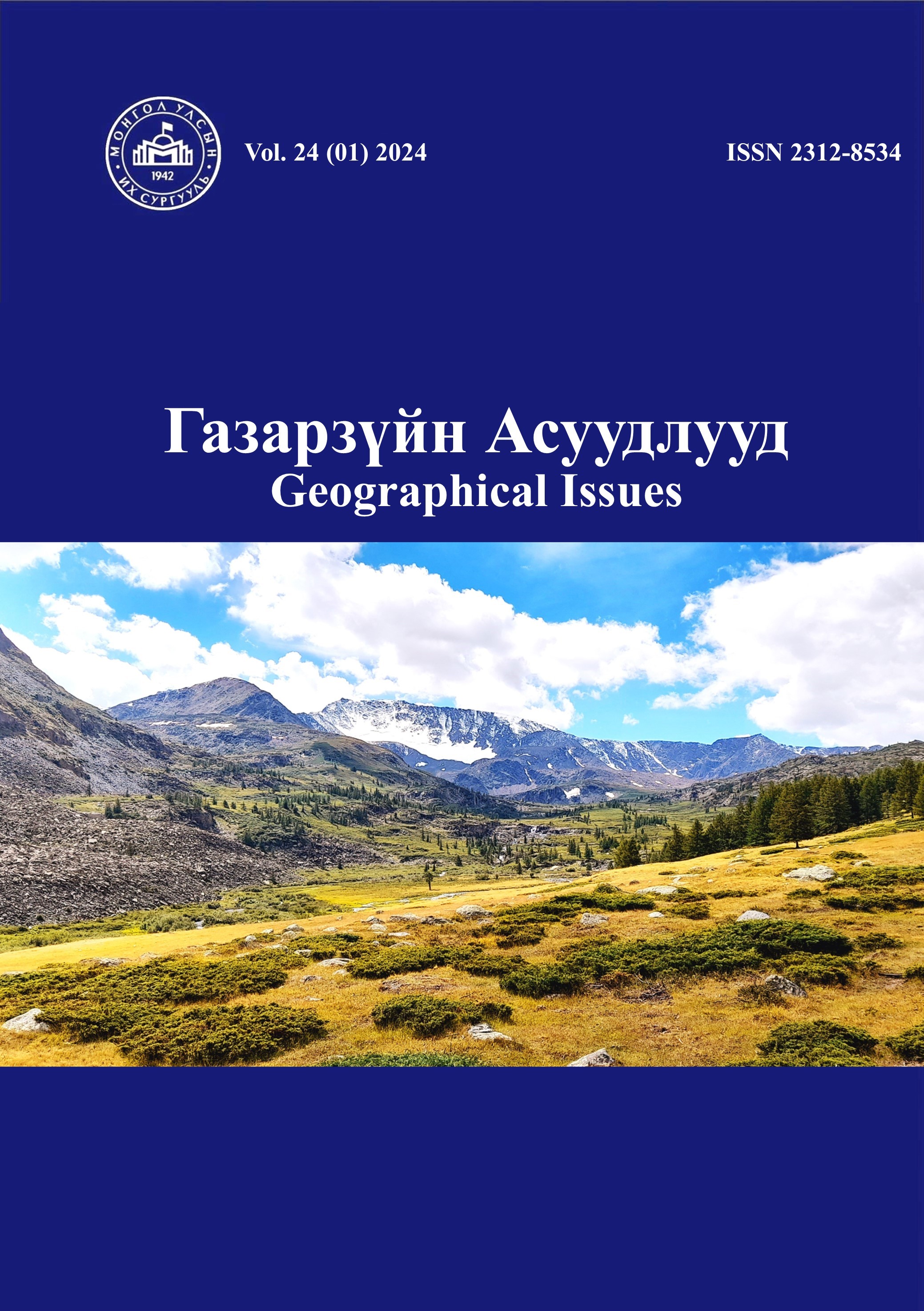Relationship between different urban surfaces and the urban heat island (A case study of the Ulaanbaatar city)
Хотын ялгаатай гадаргуу ба хотын дулааны арал хоорондын хамаарал (Улаанбаатар хотын жишээн дээр)
Keywords:
Land use, Residential area, Heat Island, Air temperature, Green spaceAbstract
The urban heat island contributes to the convective processes that cause flooding in the warm season and creates water flowing on the rivers that flow through the city in the cold season. In this research, using data from air temperature field measurement and data from automatic stations in the different land use zonings of the central districts of Ulaanbaatar, we will detect the urban heat island and observe its changes in recent years to investigate whether there is a relationship with the land surface. A linear regression equation was formulated by establishing the relationship between temperature and elevation. This equation was then utilized to map the spatial distribution of temperature, identifying the "Urban Heat Island". Due to the urban effect, the temperature warms up by 2-3°C from rural places to the city center. The covering of the built-up part of the city, such as concrete, asphalt, etc., is hotter than other surfaces by an average of 3.4 °C due to its high heat capacity, while the concrete surface was hotter than other surfaces by 1.84 °C and the glass surface by 3.68°C. Consistent with this, since we have observed a relationship between surface and heat island, to adapt to climate change in the future, it is necessary to take and implement methods implemented in urban development and urban planning.
Downloads
Downloads
Published
How to Cite
Issue
Section
License

This work is licensed under a Creative Commons Attribution-NonCommercial-ShareAlike 4.0 International License.






